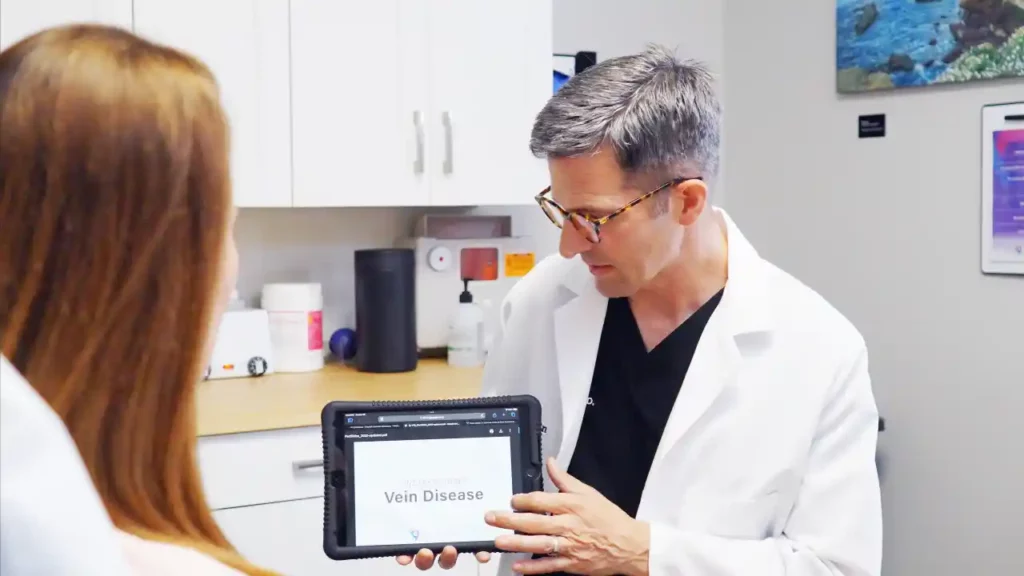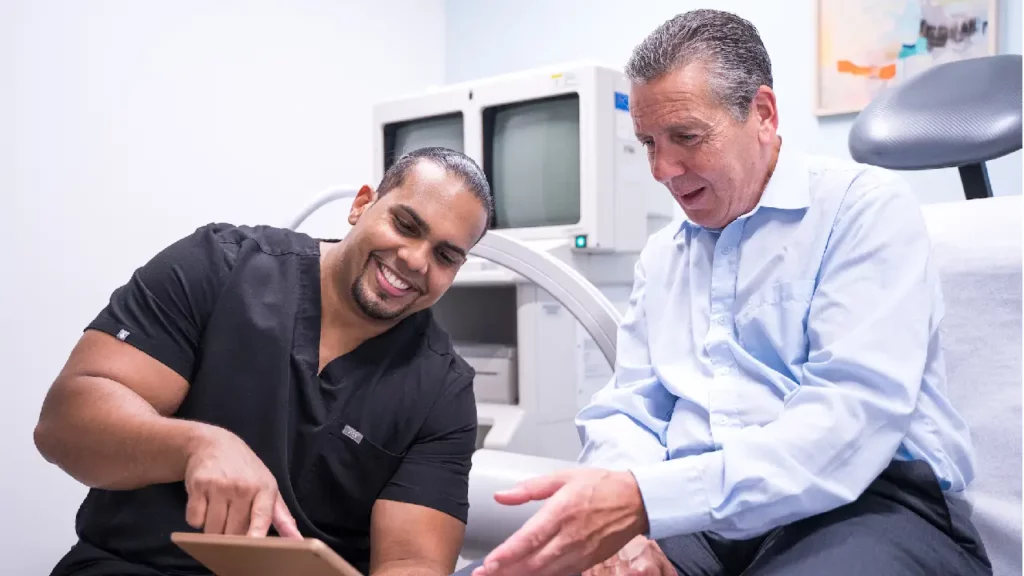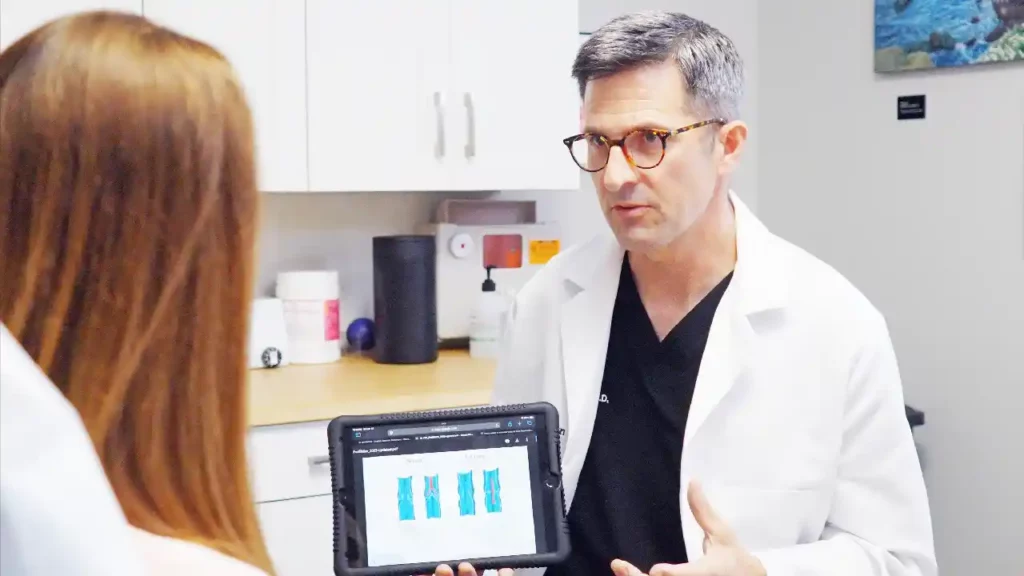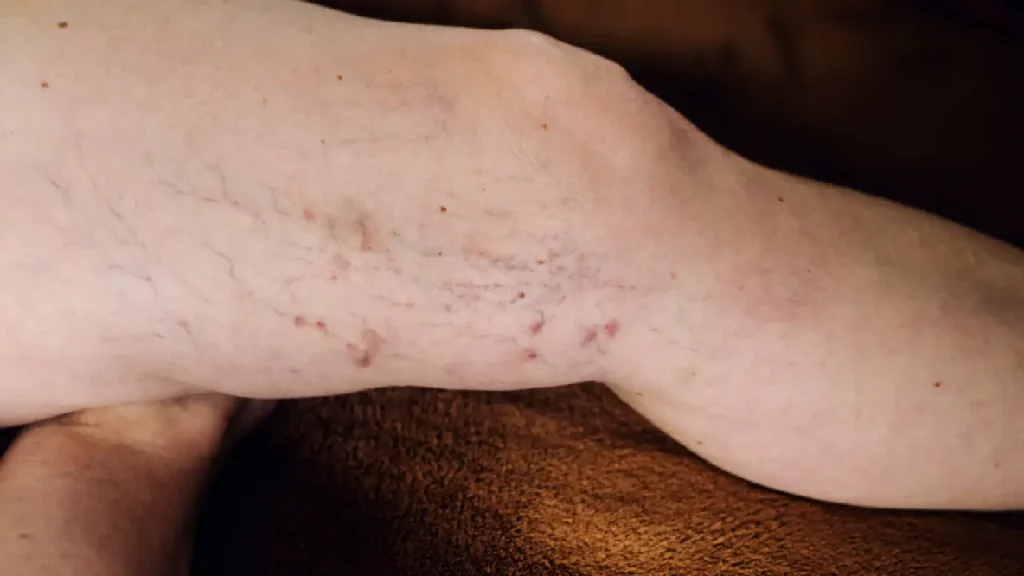At Vein Doctor for Women, we understand how challenging and uncomfortable vein issues can be. That’s why we provide minimally invasive treatments that offer effective results with less downtime and discomfort. In this article, we explain the minimally invasive vein treatments available, detailing their benefits and considerations to help you make an informed decision.
Sclerotherapy
Sclerotherapy is a widely used treatment for varicose and spider veins. During this procedure, a sclerosing agent, typically a salt solution, is injected into the vein through a very fine needle. The solution irritates the lining of the blood vessel, causing it to swell and stick together and turn into scar tissue that fades from view. This process can take several weeks to months, and veins that respond to sclerotherapy will gradually disappear as the body naturally absorbs them. This treatment is particularly effective for spider veins and smaller varicose veins.
Benefits:
- Minimally Invasive: The procedure is quick, typically taking about 30 minutes, and requires no anesthesia.
- No Downtime: You can return to your daily activities almost immediately, making it a convenient option for those with busy schedules.
- Effective: Many patients see significant improvement after just a few sessions, and the treatment is highly successful for small varicose and spider veins.
Considerations:
- Multiple Sessions: You may need multiple treatments to achieve the desired results, especially if you have numerous or large veins to treat.
- Temporary Side Effects: Some patients experience mild bruising, swelling, or itching at the injection site. These side effects usually resolve within a few days to weeks.
- Not Suitable for Everyone: Patients with certain medical conditions, such as deep vein thrombosis or certain allergies, may not be candidates for sclerotherapy.

Endovenous Laser Ablation (EVLA)
Endovenous Laser Ablation (EVLA) is a popular treatment for larger varicose veins. EVLA involves inserting a thin laser fiber into the affected vein through a small incision. The laser emits heat that damages the vein wall, causing it to collapse and seal shut. The closed vein is then gradually absorbed by the body, and blood is naturally rerouted to healthier veins.
Benefits:
- High Success Rate: EVLA has a high success rate for treating varicose veins, with many patients experiencing long-lasting results.
- Minimally Invasive: The procedure is done under local anesthesia with small incisions, reducing the risk of complications and allowing for a quicker recovery.
- Quick Recovery: Most patients can resume normal activities immediately, although strenuous activities should be avoided for a week or so.
Considerations:
- Mild Discomfort: You might experience some discomfort or bruising post-procedure. Pain is usually mild and can be managed with over-the-counter pain relievers.
- Compression Stockings: To aid recovery and improve results, you’ll need to wear compression stockings for a few weeks. These help reduce swelling and promote blood flow.
- Rare Complications: While rare, potential complications include infection, nerve injury, and blood clots. Our team takes all necessary precautions to minimize these risks.
Radiofrequency Ablation (RFA)
Similar to EVLA, Radiofrequency Ablation (RFA) uses radiofrequency energy to heat and close off varicose veins. This treatment is effective for large varicose veins and is performed under local anesthesia. RFA involves inserting a catheter into the affected vein. The catheter delivers radiofrequency energy to the vein wall, causing it to heat up, collapse, and seal shut. The vein is eventually absorbed by the body, and blood flow is redirected to healthier veins.
Benefits:
- Minimally Invasive: RFA is performed through a small incision and under local anesthesia, minimizing discomfort and risk.
- Effective: It offers a high success rate with excellent long-term results, providing relief from symptoms and improved leg appearance.
- Quick Recovery: Most patients return to their regular activities within a day or two, with minimal downtime required.
Considerations:
- Compression Stockings: You’ll need to wear compression stockings after the procedure to support healing and enhance results.
- Temporary Side Effects: Some patients may experience bruising, swelling, or tingling sensations, which usually resolve within a few days to weeks.
- Rare Complications: Potential complications, although rare, include skin burns, nerve injury, and blood clots. Our team ensures thorough pre-procedure evaluations to mitigate risks.
VenaSeal
VenaSeal is a unique treatment that uses a medical adhesive to close varicose veins. During the VenaSeal procedure, a specially formulated medical adhesive is delivered into the affected vein through a catheter. The adhesive seals the vein shut, and the body gradually absorbs it. This can be performed on an outpatient basis, allowing you to return home the same day. It doesn’t require tumescent anesthesia or compression stockings.
Benefits:
- Minimally Invasive: The procedure involves a single injection of adhesive, with no need for tumescent anesthesia.
- No Compression Stockings: Unlike other treatments, there’s no need for post-procedure compression stockings, enhancing comfort and convenience.
- Quick Recovery: You can return to normal activities immediately, with minimal downtime required.
Considerations:
- Mild Discomfort: Some patients may experience mild discomfort at the injection site, which typically resolves quickly.
- Newer Procedure: As a relatively new treatment, long-term data is still being gathered, although initial results are very promising.
- Rare Complications: Potential risks include allergic reactions to the adhesive and vein inflammation, both of which are uncommon.
Varithena
Varithena is a foam-based sclerotherapy treatment for varicose veins. Varithena involves injecting a proprietary microfoam sclerosant into the affected vein. The foam displaces blood within the vein, causing it to collapse and seal shut. The closed vein is then gradually absorbed by the body, and blood flow is redirected to healthier veins.
Benefits:
- Minimally Invasive: The procedure is quick and requires only a small needle, with no need for large incisions or stitches.
- Effective: Varithena is effective for treating a wide range of varicose veins, including those that are tortuous or difficult to treat with other methods.
- Quick Recovery: Most patients can resume normal activities the same day, with minimal downtime required.
Considerations:
- Multiple Sessions: Some patients may need more than one treatment session to achieve optimal results, especially for larger or more extensive vein networks.
- Temporary Side Effects: Mild bruising or swelling may occur at the injection site, typically resolving within a few days to weeks.
- Rare Complications: Potential risks include vein inflammation and blood clots, which are rare and usually managed effectively.

ClariVein
ClariVein is a mechanochemical ablation technique that combines mechanical disruption of the vein’s inner lining with a sclerosant. This treatment is ideal for patients who want to avoid heat-based procedures. ClariVein uses a catheter with a rotating tip that mechanically disrupts the vein lining while simultaneously delivering a sclerosant to close the vein. This dual-action approach effectively seals the vein without the need for thermal energy.
Benefits:
- Minimally Invasive: The procedure is performed through a small incision with minimal discomfort, typically without the need for tumescent anesthesia.
- No Heat Required: This technique avoids the use of thermal energy, reducing the risk of nerve damage and skin burns.
- Quick Recovery: Most patients can return to their normal activities immediately with minimal downtime.
Considerations:
- Temporary Side Effects: You may experience mild bruising or discomfort at the treatment site, which usually resolves quickly.
- Compression Stockings: You’ll need to wear compression stockings for a short period post-procedure to aid in healing and enhance results.
- Rare Complications: Potential risks include vein inflammation and blood clots, although these are uncommon and typically managed effectively.
Ambulatory Phlebectomy
Ambulatory phlebectomy is a procedure in which small varicose veins are removed through tiny incisions in the skin. Small incisions are made along the course of the vein, and the vein is removed in sections using specialized tools. This procedure is typically performed under local anesthesia and is done on an outpatient basis. It is ideal for veins that are too large for sclerotherapy but too small for other vein treatments.
Benefits:
- Effective: It provides immediate removal of visible varicose veins, offering both functional and cosmetic improvements.
- Minimally Invasive: The incisions are small and typically leave minimal scarring, with stitches rarely needed.
- Quick Recovery: You can walk immediately after the procedure and return to normal activities within a few days, although strenuous activities should be avoided for a week.
Considerations:
- Temporary Side Effects: You may experience bruising, swelling, or numbness at the incision sites, which usually resolve within a few weeks.
- Compression Stockings: Wearing compression stockings for a few weeks post-procedure is recommended to support healing and enhance results.
- Rare Complications: Potential risks include infection, nerve injury, and blood clots, although these are uncommon and typically managed effectively.
Contact Us for Minimally Invasive Vein Treatments
At Vein Doctor for Women, we’re committed to helping you achieve healthy, beautiful legs with the least amount of discomfort and downtime. Our minimally invasive vein treatments offer a range of options to address your specific needs, ensuring you receive the best possible care. If you’re struggling with varicose or spider veins, contact us today to schedule a consultation and learn more about which treatment is right for you.
